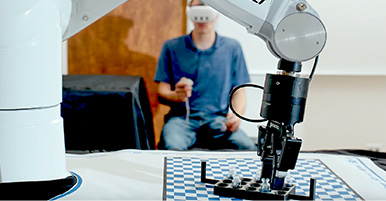
“Her legacy of work has and will continue to improve the lives of students with disabilities for years to come.”
Mary Wagner, a cherished SRI colleague and globally respected leader in education research, died on January 8. She left behind an extraordinary legacy spanning four decades of groundbreaking work supporting children and youth with disabilities and their families. Her contributions have profoundly influenced federal policies and advanced the field of education research.
Mary joined SRI’s Center for Health, Education, and Social Science Research in 1980 under the leadership of Dr. Mimi Stearns. At the time, the center was at the forefront of studying the implementation of Public Law 94-142, commonly known as the “mainstreaming” law. This landmark legislation mandated providing students with disabilities a free, appropriate public education in the least restrictive environment suitable for their needs.
Recognizing Mary’s exceptional talent, Stearns selected her to co-lead a federally funded longitudinal study designed to assess the impact of this legislation. The study followed a nationally representative sample of 13- to 16-year-old students with disabilities over eight years, marking a first-of-its-kind effort to evaluate the law’s effectiveness.
The success of this high-visibility project positioned SRI as a leader in disability research, leading to four additional major longitudinal studies under Mary’s leadership. Her work yielded invaluable data and analyses that policymakers and researchers have used to generate more than 2,000 publications and presentations worldwide.
Mary was also called upon twice to testify before congressional committees, further cementing her role as an influential voice in shaping federal education policies.
Beyond her research, Mary made lasting contributions by expanding the scope of SRI’s work to include evaluations of programs addressing the broader needs of children, youth, and their families.
As the founder of SRI’s Center for Education and Human Services — now the Center for Learning & Development — she led efforts such as the pioneering evaluation of California’s Healthy Start program.
Mary’s commitment to excellence in research was matched only by her dedication to fostering a supportive and collaborative work environment. Her exemplary mentorship earned her the Mimi Award for outstanding professional development of colleagues, and her scholarly achievements were recognized with an SRI Fellows Award.
“Mary was not only a superb researcher, but also a great mentor, leader, and advocate for all those around her,” said Shari Golan, president of SRI’s Education Division. “She encouraged excellence, original thoughts, integrity, initiative, respect, and grace. Her legacy of work has and will continue to improve the lives of students with disabilities for years to come.”
Mary is survived by her husband, Rick Ferguson, and her daughters, Kate Ferguson and Joy Ferguson Solomon. Kate is a valued member of SRI Education, continuing her mother’s legacy of impactful research.
Mary Wagner’s contributions to SRI, her colleagues, and the field of education research are immeasurable. She leaves behind a legacy of intellectual rigor, compassion, and inspiration that will continue to guide and influence the field for generations to come.


